13 Easy Ramen Hacks That Make It Taste Like Restaurant Noodles
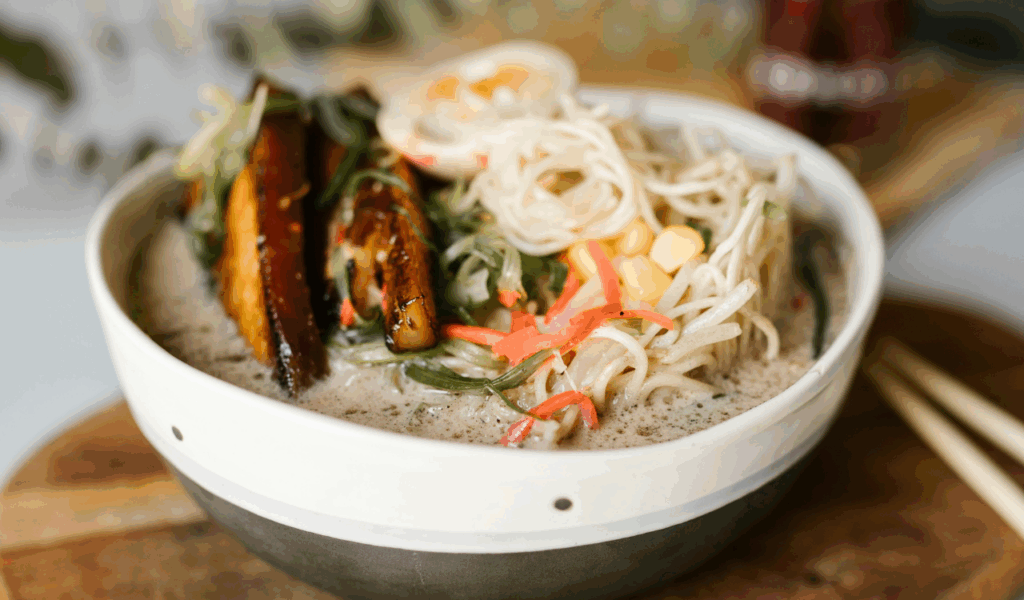
When you’re pressed for time, money, or energy, instant ramen is a lifesaver. However, let’s face it, the flavor may be a little bland right out of the packet. The good news? To have that rich, slurp-worthy experience, you don’t have to visit a fancy noodle bar. Your simple bowl can taste just as good as ramen from a restaurant with a few quick upgrades, pantry essentials, and ingenious adjustments. These shortcuts are quick, inexpensive, and incredibly tasty, regardless of your preference for creamy broth, strong umami, or additional texture. Let’s explore 13 simple ramen improvements that will revolutionize your perspective on that unassuming noodle block.
1. Use Broth Instead of Water

Using plain water instead of broth is one of the most straightforward and effective ramen hacks. The noodles immediately gain depth and richness from the addition of chicken, beef, or vegetable stock. While water merely hydrates, broth adds flavor and produces a more gratifying base that resembles soup from a restaurant. You also have more control over the amount of saltiness if you use low-sodium broth, particularly if you’re still using the seasoning packet. Before adding the noodles, simmer the broth with aromatics like ginger, garlic, or green onion for a stronger flavor. In less than five minutes, this one change alone can transform your ramen from boring to flavorful.
2. Add Soft-Boiled Eggs
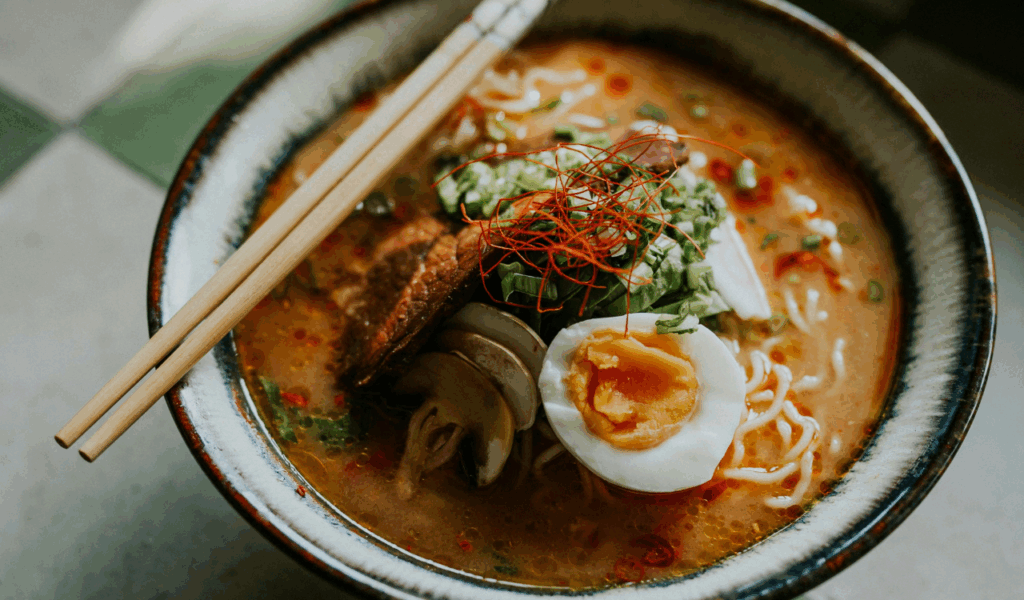
A perfectly jammy soft-boiled egg is the epitome of gourmet ramen. Your ramen will feel more substantial and decadent thanks to the protein and creaminess that the rich, slightly gooey yolk adds. To make one, place eggs in ice water to stop the cooking after precisely 6–7 minutes of boiling. Before serving, peel and cut in half. Like the ramen shops, you can marinate them for a few hours in a mixture of soy sauce, mirin, and a little sugar for added flavor. Your bowl will look and taste like it was prepared by a chef, and even a simple boiled egg will improve the whole experience.
3. Toss in Some Fresh Vegetables
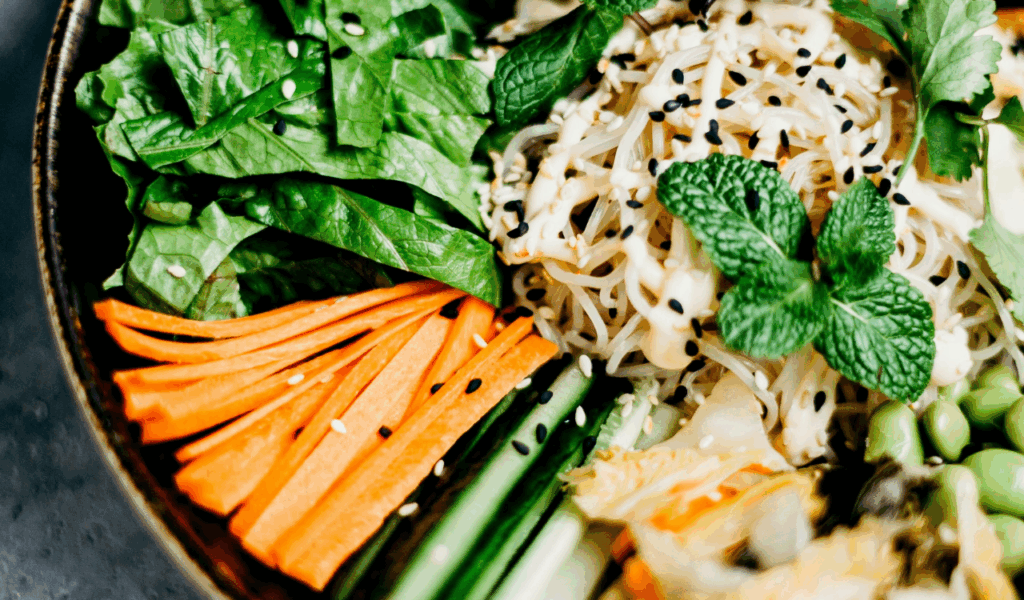
Fresh, crunchy vegetables are often used to balance the richness of ramen in restaurants, and you can do the same. Consider mushrooms, corn, bean sprouts, spinach, or bok choy. These add color and texture in addition to increasing the nutritional value. You can toss them straight into the broth in the last minute of boiling, or you can quickly steam or stir-fry them while the noodles cook. This small addition not only makes your ramen healthier but also more aesthetically pleasing and filling. Your bowl can be significantly improved with just a few frozen mixed vegetables.
4. Stir in a Spoonful of Miso
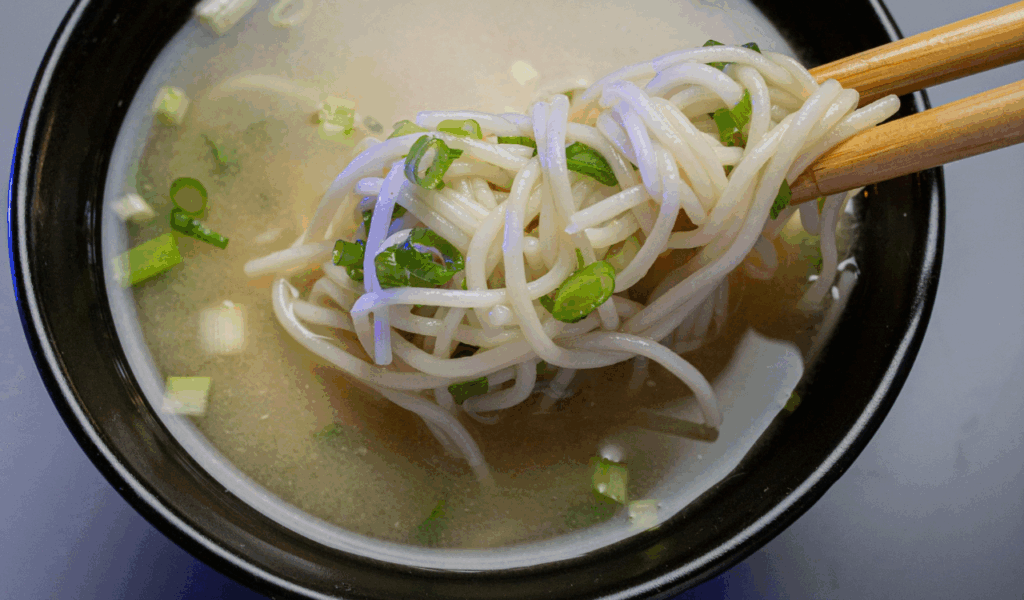
A fermented soybean product, miso paste is rich in complexity and umami. Adding a spoonful to your ramen broth, particularly if you’re starting with a weak or plain stock, gives it a rich, savory flavor that resembles the famous miso ramen served in Japanese restaurants. Red miso is stronger than white miso, which is milder and a little sweeter. To retain its flavor and probiotics, do not boil miso directly; instead, dissolve it in a small amount of hot broth and stir it in at the very end. It’s revolutionary because it adds nutrition and flavor.
5. Top With Sliced Scallions
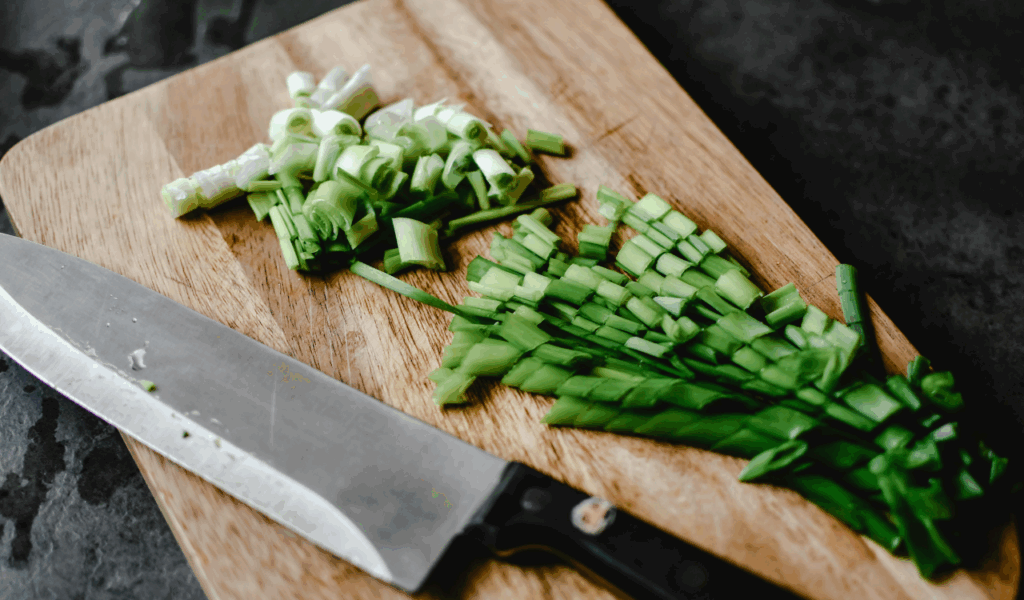
For good reason, scallions, also known as green onions, are a traditional ramen garnish. Their crisp, fresh bite balances the flavors and adds crunch and aroma while cutting through the broth’s richness. Just before serving, sprinkle the green and white portions over your ramen after thinly slicing them. For a smoky twist, you can also lightly sauté or char them. They instantly give your bowl a more polished appearance, are inexpensive, and don’t need to be cooked. Don’t ignore it; it’s a small touch that has a big impact.
6. Mix in a Bit of Sesame Oil

Your ramen can be totally changed with just a few drops of toasted sesame oil. It immediately improves the dish by adding a rich, nutty flavor and a restaurant-quality scent. To prevent the oil from burning or losing its flavor, stir it in after the noodles are cooked. Before serving, you can also drizzle it on top. Sesame oil complements almost any ramen variation because it goes well with soy sauce, miso, chili paste, and garlic. Additionally, it gives your bowl the lustrous, delicious finish that chefs strive for.
7. Add Protein for a Hearty Meal
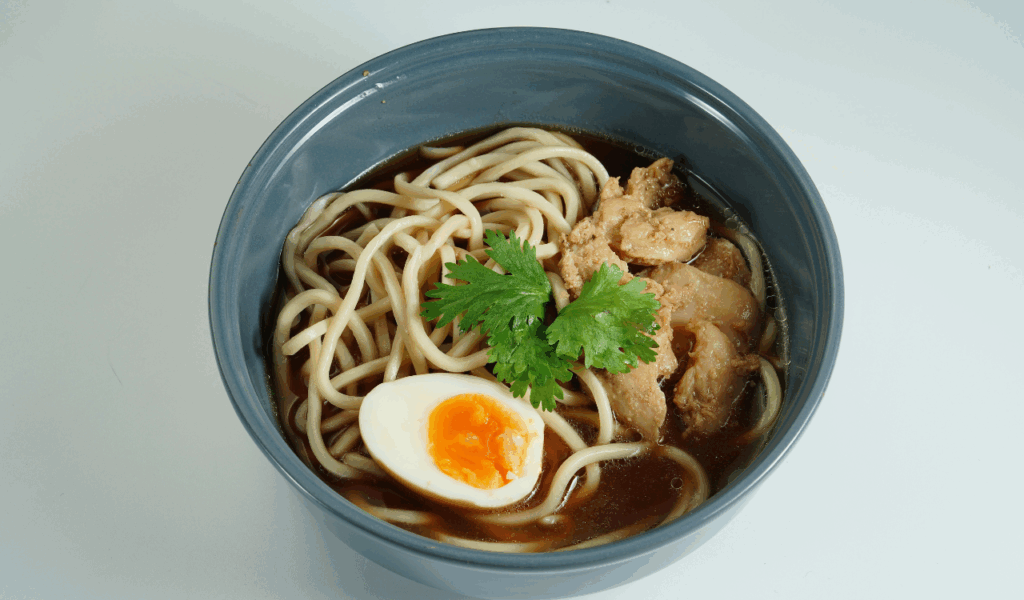
Proteins like grilled chicken, pork belly, shrimp, or tofu are frequently found in restaurant ramen. Your snack becomes a complete meal when you include a source of protein. Seared tofu, pan-fried shrimp, or shredded rotisserie chicken are easy options. Slice up any leftover meat from dinner and add it. In a pinch, canned beans or tuna can also be used. To keep it juicy and flavorful, it’s important to season it thoroughly and add it after the noodles are cooked. Adding more protein to your ramen gives it balance and fullness.
8. Sprinkle on Furikake or Seaweed
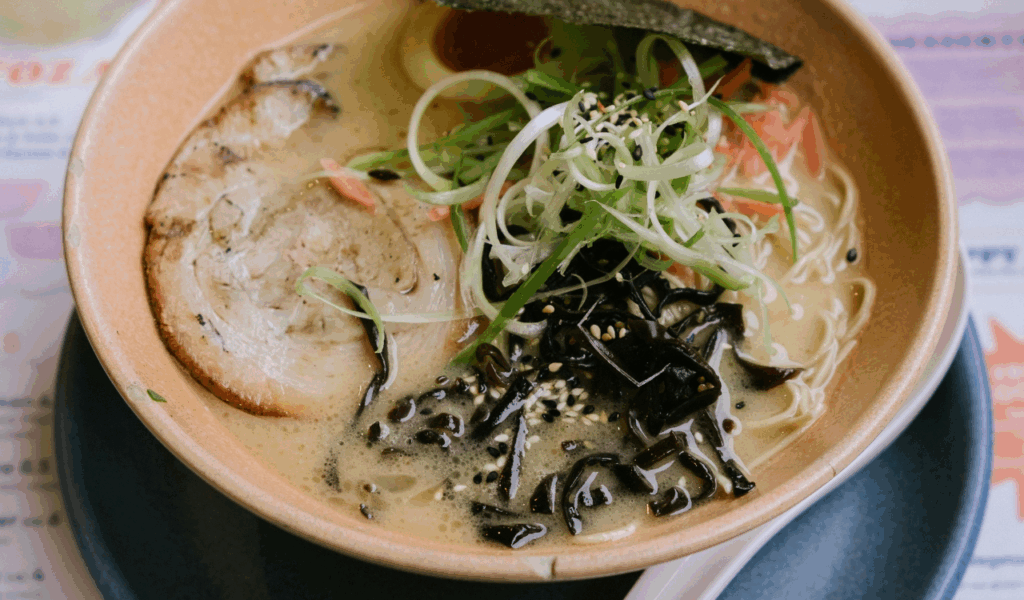
Sesame seeds, seaweed, salt, and occasionally dried fish or wasabi are combined to make furikake, a Japanese seasoning blend. Adding it to your ramen immediately improves its texture and umami. A sheet of crushed nori, or dried seaweed, also works well if you don’t have furikake. Seaweed gives restaurant ramen its unique savory seafood flavor. These toppings are ideal for adding complexity without a lot of work because they are quick, easy to prepare, and shelf-stable. A pinch will suffice.
9. Upgrade with Chili Oil or Paste

The power of a good chili oil is well known to spice lovers. Your ramen will feel more thrilling and genuine with the addition of a swirl of chili oil or a spoonful of chili paste (such as sambal oelek or gochujang), which adds heat and flavor that lingers. By heating neutral oil with red pepper flakes, garlic, and a small amount of soy sauce, you can even create your own quick chili oil. Carefully stir; you want to add, not overwhelm. This trick is particularly effective when used with broths that contain miso or soy.
10. Use Fresh Noodles (If You Can)

Use fresh ramen noodles instead of dried ramen blocks for a truly restaurant-caliber experience. They are sold frozen or refrigerated in many Asian markets and supermarkets. Compared to instant types, they absorb broth better, cook more quickly, and have a springier texture. Udon or fresh egg noodles can also be a tasty substitute. To maintain a firmer bite, cook the noodles a little less than the recommended time if you’re sticking with instant noodles; this in and of itself can improve their flavor.
11. Add a Splash of Soy Sauce

The best flavor enhancer is soy sauce. The broth gets a savory, umami-rich restaurant vibe and its color is deepened with a dash or two. Additionally, it strikes a balance between fat and sweetness, particularly when eggs, miso, or sesame oil are added. Dark soy sauce adds color and intensity, while light soy is best for general seasoning. Taste as you go and add it gradually because too much can quickly become overwhelming. This trick will always make your ramen come to life and is infallible.
12. Finish with a Dash of Rice Vinegar

Although it may seem odd to add vinegar to ramen, a small amount of apple cider vinegar or rice vinegar makes everything more vibrant. Like a squeeze of lemon in soup, it adds a subtle tang, lifts flavors, and cuts through richness. Go light and add it right at the end, after you’ve tasted your broth. You want it to be more dynamic, not sour. A little acidity gives your ramen a polished, tidy appearance.
13. Garnish with Toasted Garlic or Fried Onions
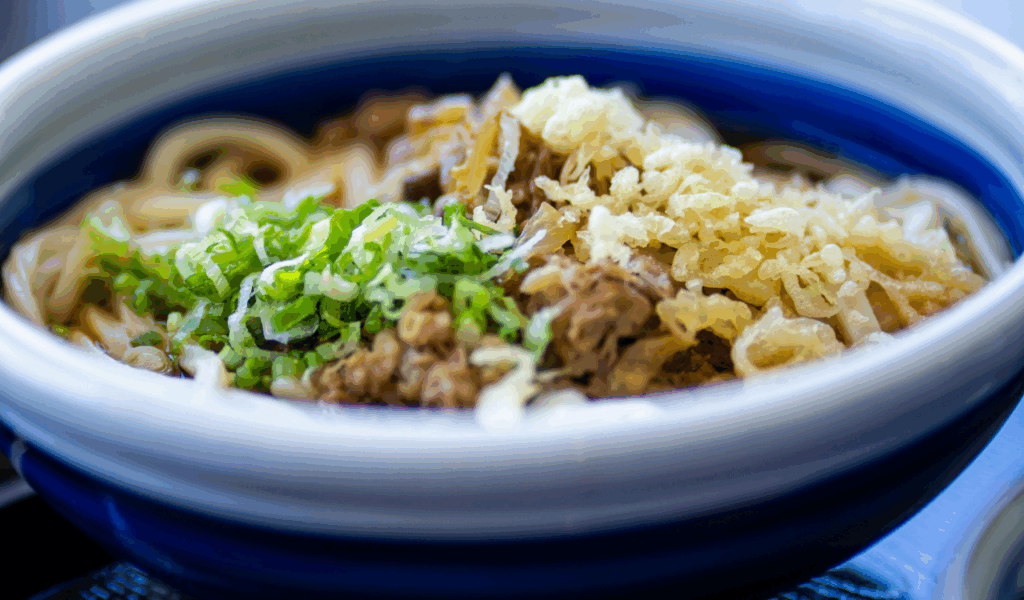
With good reason, restaurants frequently use fried shallots or crispy garlic as a last garnish because they provide texture and a rich, roasted flavor. You can either buy these already made or make your own by thinly slicing garlic and cooking it in oil until it turns golden. Just before serving, sprinkle on top after draining on paper towels. The crunch and flavor boost of fried onions is comparable. Your ramen will feel layered, considerate, and chef-approved thanks to these subtle yet effective finishing touches.





